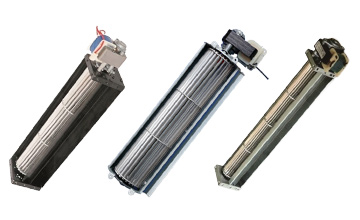What could be the reasons when the motor of a commercial refrigerator doesn't work?
Oct 31,2024 - 15:24 Reading:826

The motor of a commercial refrigerator may not work if the refrigerator plug isn't plugged in properly or if there is a problem with the socket. Check whether the plug is loose and try plugging it back into the socket to ensure it is plugged in tightly. If the socket has no power, you can test it by plugging other electrical appliances (such as a desk lamp) into the socket. If other appliances don't work either, the socket may be damaged and you need to check the circuit fuse or contact an electrician for repair.
Damaged Power Cord
Situations such as long-term use or being pulled by external force may cause damage to the power cord. Check whether there are obvious signs of damage, breakage, or burning on the power cord. If the power cord is found to be damaged, a new power cord needs to be replaced. Note that when replacing the power cord, make sure the specifications of the new power cord are the same as those of the original power cord of the refrigerator.
Faulty Thermostat
If the temperature is set too high, the motor of the refrigerator may not start. For some refrigerators, the smaller the number on the thermostat, the higher the temperature. When the temperature is set at a higher level, if the internal temperature of the refrigerator doesn't reach the threshold for starting the motor to cool, the motor won't work. Adjust the temperature setting to an appropriate range according to the refrigerator's instruction manual. Usually, the temperature of the refrigerator compartment is set between 2 - 8 degrees Celsius, and the temperature of the freezer compartment is set at around - 18 degrees Celsius.
Damaged Thermostat
The thermostat is a crucial component that controls the starting and stopping of the refrigerator motor. If the thermostat malfunctions, it may not be able to accurately sense the internal temperature of the refrigerator and thus cannot send the signal to start the motor. A multimeter can be used to test the resistance value of the thermostat. Under different temperatures, the resistance value of the thermostat should change accordingly. If the resistance value is abnormal or doesn't change, it may indicate that the thermostat is damaged and needs to be replaced.
Overload Protection Device Tripped
The motor of a commercial refrigerator may trip the overload protection device due to overload. This can be caused by reasons such as the refrigerator working continuously for a long time, poor ventilation leading to overheating of the motor, or excessive current when the motor starts. Once the overload protection device is tripped, the motor will stop working to avoid damage. Wait for a period of time (usually ranging from 30 minutes to several hours) to let the motor cool down. The overload protection device may reset automatically, and then try to start the refrigerator again.
Problems with the Starting Relay
The function of the starting relay is to help start the motor. If the starting relay is damaged, the motor may not be able to start normally. The starting relay may have problems such as burned contacts or damaged coils. You can initially judge whether the starting relay is working by listening for a "click" sound when the motor starts. If there is no sound, it may indicate that the starting relay is faulty and needs to be replaced.
Damaged Motor Windings
The windings of the motor of a commercial refrigerator may experience short circuits or open circuits due to reasons such as long-term use, moisture, or abnormal power supply voltage. Use a multimeter to test the resistance value of the motor windings. If the resistance value is infinite (open circuit) or significantly lower than the normal range (short circuit), it indicates that the motor windings are damaged. In such cases, a new motor usually needs to be replaced.
Motor Bearing Problems
Wear or seizure of the motor bearings can also cause the motor to not work properly. If the motor bearings are worn, the motor may produce abnormal noises during operation. When the bearings are seized, the motor cannot turn at all. Check whether the motor bearings are flexible. If necessary, replace the motor bearings or the entire motor.
If none of the above can solve your problem, you need to go to the designated repair shop for repair or you can also contact the supplier!

























.jpg)
.jpg)

